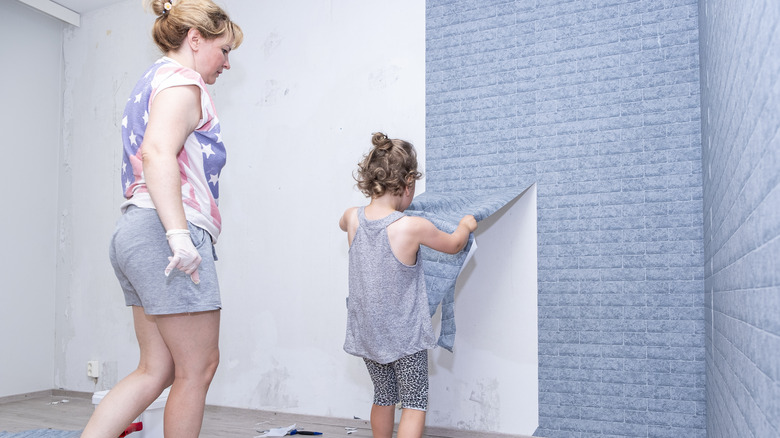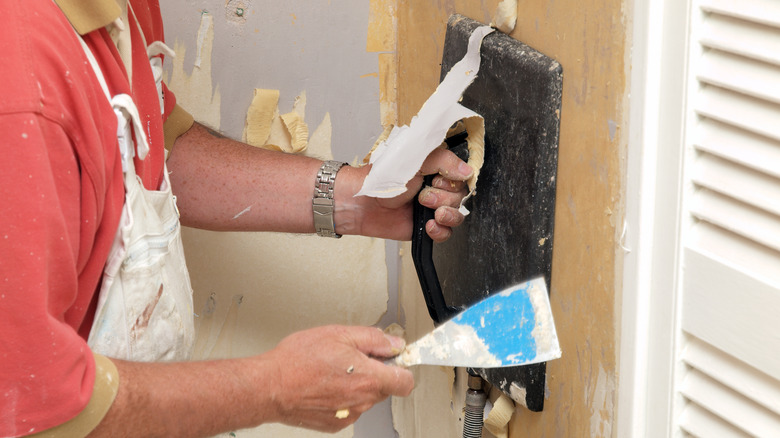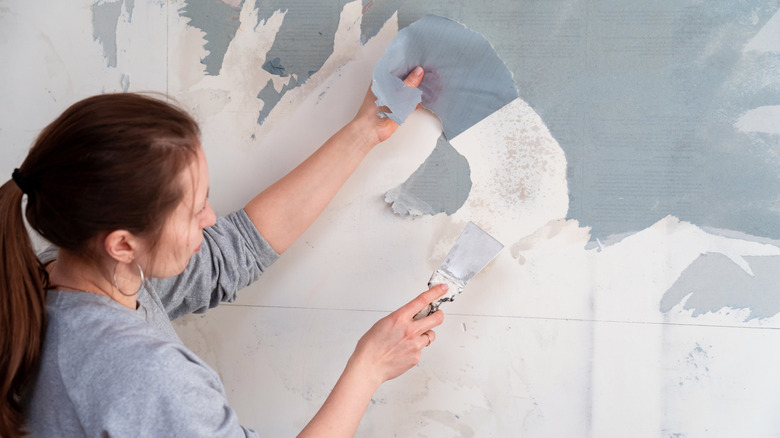The Best Method For Removing Wallpaper From Drywall
Wallpaper looks amazing in certain situations, which makes it an appealing design choice. However, when it's time to refresh the room's design, wallpaper is often the first thing to go. It's easy to make mistakes when you're removing wallpaper, which can leave you with tears in the drywall's paper cover and ugly gouges on your drywall. Following some of the best ways to remove your wallpaper will give you results that you can take pride in and that will reduce repair work you need to do afterward. The best options are using a stripping solution, water and vinegar, or a steamer.
If it is extremely loose, you may be able to gently pull it off with your hands or pry it off using a putty knife. With older wallpaper, it's common to have a few areas where the material has become loose from the drywall because of the paste failing, especially at the seams. You could pull it away in the areas where it's loose already, tearing it when you reach a spot where it's still adhered tightly. In areas where the paper is still sticking, which is common, you'll have to try one of the other methods to completely free it from the drywall.
There are a few hacks on the internet that claim to help you remove wallpaper from drywall — such as using a hairdryer or spraying fabric softener onto it — but these ideas don't work as well as the other methods we listed earlier.
How to safely and efficiently remove wallpaper
If you have concerns about using harsh chemicals on your wallpaper removal project, you may want to start with basic water. Before you start this process, tape a drop cloth or some plastic to the floor with painter's tape. This DIY job will quickly become messy because of the use of water or other liquid chemicals, so you want to catch drips and any soggy materials before they end up on the floor.
Removing wallpaper from drywall with a steamer is a common method that people have luck using and that only uses hot water. It can be uncomfortable to work with because of the heat, and you may have to rent the steamer. That's why some people prefer to use an equal mixture of water and white vinegar in a spray bottle. Soak the area where you want to remove the wallpaper with this mixture, and it should separate from the drywall. You may need to use a putty knife in a few spots to fully pry it loose.
Perhaps the most efficient means of removing the wallpaper from drywall is making use of a stripping solution. If you don't mind the use of chemicals, this solution should make the process go fast. You can purchase the stripper at a hardware store. You usually will need to dilute it with water in a spray bottle before you begin using the stripper on the wallpaper. A putty knife helps pry it loose.
Final steps after removing wallpaper
Removing the wallpaper often isn't the last step you need to follow before you can paint the drywall. Most of the time, a little bit of residue will remain behind, usually some adhesive that can be challenging to remove. You basically will need to clean the drywall to give you the smoothest remaining surface to deploy your new design idea. If you only have a little bit of paste remaining in a few spots, you often can mix dish soap and warm water in a spray bottle. Spray the mixture onto the drywall and wipe it with a sponge. Go back over the spot with a dry rag to eliminate any remaining residue.
If the paste or glue is spread across a large segment of the drywall, or if it's still pretty thick after removing the wallpaper, you may need a more aggressive method to fully remove and clean it. The chemical stripping solution that you mixed up earlier to remove the wallpaper can work on the glue as well. Spray it on and let it sit for up to 20 minutes. Then use a putty knife or scraper to pull it loose.
If only a little bit comes off, you may need to repeat the process. Go back over the entire space with a damp sponge to eliminate any final bits of adhesive. If you used a steamer to take down the wallpaper, this machine may also work on the adhesive that remains.


